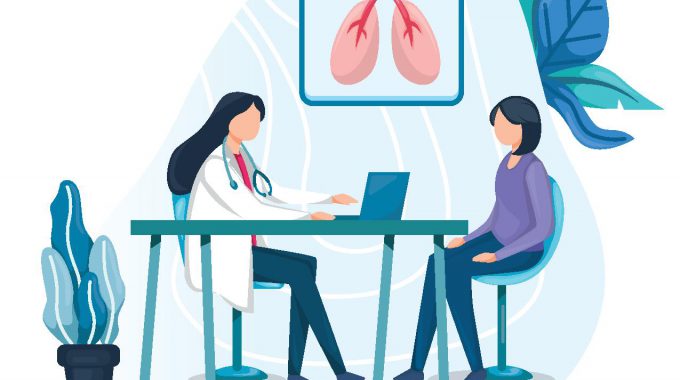Kenyataan Media — Untuk Siaran Segera Kuala Lumpur, 23 September 2025 Joint Action Group for…
Primary healthcare clinics are best-placed to reach domestic violence survivors. Here are four ways to strengthen their response to domestic violence.

With the COVID-19 crisis, we have seen a rise in domestic violence that has been referred to as a ‘pandemic within a pandemic’. At the same time, healthcare resources—especially in hospitals and emergency rooms—are being stretched to their limits to treat COVID-19 patients.
As we continue to weather the pandemic, we must also look to the future and assess how we can strengthen our healthcare system both to withstand acute public health crises, like the one we are currently in, and to better address longer-term public health crises, such as domestic violence.
One way to do so is to strengthen the response to domestic violence at primary healthcare clinics, such as Klinik Kesihatans. This would not only ensure better support for survivors, but also help alleviate the burden on hospitals and emergency rooms.
Primary healthcare clinics are best-placed to reach domestic violence survivors, as survivors most frequently seek help from the health system1—even before the police—and clinics are survivors’ first point of contact with the health system.
Domestic violence is also prevalent among patients at primary healthcare clinics. According to a 2019 study, 22 per cent of women who visited primary healthcare clinics in Kuala Lumpur had experienced domestic violence.
Yet, there is currently no systematic response mechanism to domestic violence at the primary healthcare level. As a result, healthcare providers who are already in contact with domestic violence survivors miss the opportunity to offer them support.
In its latest brief, ‘Strengthening the Primary Healthcare Response to Domestic Violence’, Women’s Aid Organisation (WAO) presents four recommendations, based on World Health Organization guidelines, to strengthen domestic violence response at primary healthcare clinics.
First, healthcare providers should be trained to identify health conditions associated with domestic violence and ask patients about domestic violence.
Domestic violence can underlie or complicate various health conditions, particularly those related to mental health (such as sleep disorders, which can result from stress and anxiety relating to prolonged physical and psychological abuse) and sexual and reproductive health (such as unexplained reproductive symptoms, like pelvic pain). Hence, to effectively manage these conditions, healthcare providers need to know whether their patients have been exposed to domestic violence.
Healthcare providers should be trained to identify health conditions related to domestic violence and proactively ask women about domestic violence, as research shows that domestic violence survivors are more willing to disclose domestic violence if healthcare providers initiate the conversation.
Special attention should be given to detecting domestic violence among patients at maternity clinics, as the health consequences of violence are graver during pregnancy. Pregnant women also visit maternity clinics multiple times throughout their pregnancy, giving healthcare providers more opportunities to detect domestic violence and provide follow-up care.
Second, healthcare providers should be trained to recognise, respond to, and refer cases of domestic violence.
Training is crucial, as concerns about offending patients and not knowing how to ask the necessary questions are among the top barriers to asking about domestic violence cited by primary care clinicians in a Malaysian study.
To train healthcare providers, we can draw on the World Health Organization’s training curriculum on violence against women for healthcare providers.
Third, primary healthcare clinics should display information on domestic violence in their waiting rooms and washrooms.
This would enable survivors to obtain information in a discreet manner, which could help ensure their safety, especially if they are accompanied by their abuser to the clinic.
Displaying information on domestic violence also sends the signal that health clinics are sensitive to domestic violence, which may encourage survivors to seek help.
Fourth, the government should establish a referral system for domestic violence at the primary healthcare level.
This referral system could be integrated into the existing Guidelines for Handling Domestic Violence Cases, which outline how various government agencies are to respond to domestic violence.
By strengthening the primary healthcare response to domestic violence, more survivors will get the support they need and fewer will find themselves in a crisis where they are forced to seek emergency care.
WAO’s full policy brief can be downloaded at bit.ly/waoprimarycare. WAO’s advocacy work is supported by its strategic partner, Yayasan Sime Darby.
[1] Shuib, R., Ali, S. H., Abdullah, S., Ab Ghani, P., Osman, I., Endut, N.,…Shahrudin, S.S. (2014). Executive Report, Summary of Findings: A Country Level Study of Women’s Well-being and Domestic Violence Against Women (DVAW) Using WHO Multi-country Questionnaire. Women’s Development Research Centre (KANITA), Universiti Sains Malaysia.
###
About Women’s Aid Organisation (WAO)
Since 1982, Women’s Aid Organisation has provided free shelter, counselling, and crisis support to women and children who experience abuse. We help women and their children rebuild their lives, after surviving domestic violence, rape, trafficking, and other atrocities. Learning from women’s experiences, we advocate to improve public policies and shift public mindsets. Together, we change lives.
Call the WAO Hotline at 03 7956 3488 or SMS/WhatsApp TINA at 018 988 8058 if you or someone you know is experiencing abuse. For more information, visit wao.org.my.
For more information, please contact:
Natasha Dandavati, Head of Campaigns
Rusni Tajari, Senior Advocacy Officer
rusnitajari@wao.org.my/+60 13-380 2287


Comments (0)